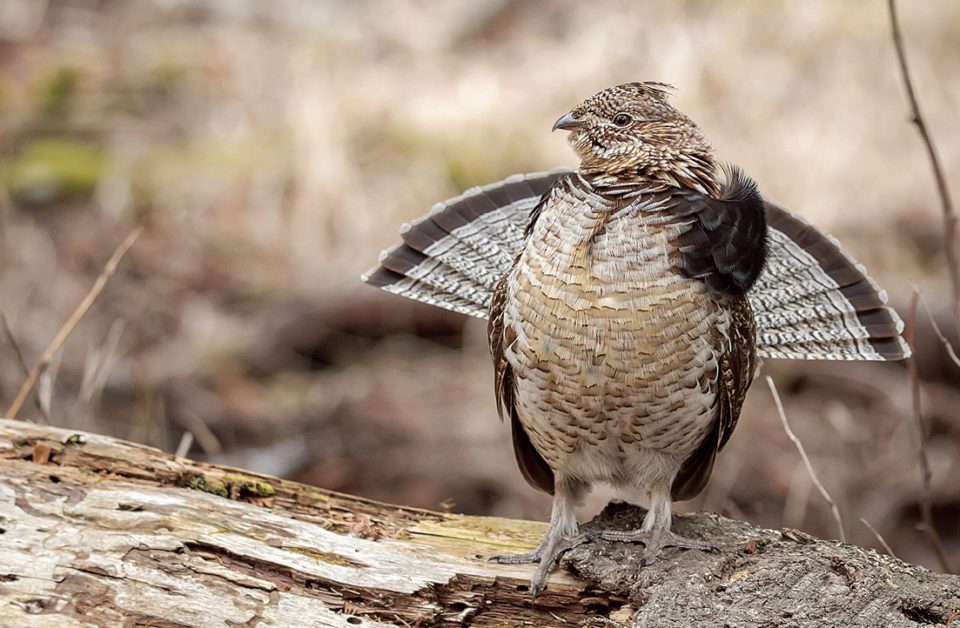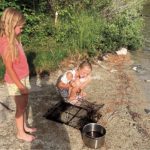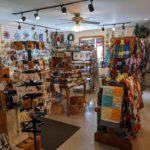Grouse hunting likely started for me when I was 4 years old, but certainly by age 5. I trudged along behind Dad, not carrying a gun. A couple of years later, I was allowed to carry a Christmas present, a Daisy BB gun that never was used to kill a “partridge,” as we called the birds back then.
My first partridge was taken north of Two Harbors at age 8, when Dad handed me a single-shot 20-gauge shotgun he was carrying. Taking a bead, I shot the bird as it scurried away through the hazel brush. The following year, the 20-gauge became my hunting weapon. It is still in my cabinet and sees some use every year.
Since age 4, my enthusiasm for tromping through the autumn woods hasn’t wavered. Nor has my enjoyment of canine companionship. The first dog was our family’s Lab-Weimaraner cross, Sooty. The current hunter is a reddish yellow Lab named Rainy. All my dogs had attributes and flaws, like their human companion, but they’ve shared with me an enthusiasm for bird hunting. That’s truly all that matters.
As a kid, most of my grouse hunts with Dad occurred within an hour’s drive of Duluth, from the Nemadji River country off Highway 23 south of Duluth, to the Cotton area south of the Iron Range and over to the headwaters of the Knife and Cloquet rivers. We walked everywhere, nearly always along old logging roads or by long-abandoned farms. The farmsteads nearly always contained a few unkempt apple or plum trees where “partridge” fed on the ripening fruit.
The only time we drove or “road hunted” was when we went to the North Shore, usually starting out from Finland or Isabella. Dad wasn’t much of a road-hunter, but he enjoyed exploring the backroads and said he had never had much luck hiking the old logging roads “up the Shore.” Some years we saw few partridges on our drive, but other times we would shoot several birds. Either way, I enjoyed road hunting, but never as much as hiking.
It was around this time that partridge hunting began to change. The 1970s was the era of monster four-wheel-drive pick-ups. Suddenly, many forest trails once the domain of hunters on foot were suddenly available to high-lift pickups with big tires. While the hunters that piloted the pickups didn’t do much to dent bird numbers, they turned every wet spot in a logging trail into a mudhole that was nearly impassable on foot. Once, as we slogged through a particularly sloppy trail, Dad and I were passed by a mud-covered pickup. Dad remarked to the driver that the trail was a mess, to which he replied “That’s what trucks are for.” Fortunately, Dad held his temper.
One year in college, I arranged my autumn class schedule so I could get out in late morning and then spend the afternoon in the partridge woods. Even now, I have vivid memories of some of those hunts, carrying a 12 gauge over and under that I purchased new for myself. I was proud of that shotgun, carrying it many miles through the grouse woods of Minnesota and Ontario, as well as on pheasant trips and duck trips to Iowa and the Dakotas. Eventually, I replaced it with other shotguns after breaking the wooded stack, but I still think about that gun now and then.
During my college years, everyone began referring to the birds as grouse, because they are formally known as ruffed grouse. But I still called them partridge, especially when around Dad or northern friends. It wasn’t until I began calling myself an outdoor writer that I fully switched to the fancy “grouse” title. Perhaps it was due to a fear that I might make a slip and use “partridge” in print.
After college I spent a few years in the Twin Cities, where I was hired by Fins and Feathers magazine. I remember telling the executive editor my goal was to shoot 25 grouse every autumn. To the best of my recollection, most years I managed to meet that goal despite a long drive to the northern grouse woods. From Minneapolis, Vikki and I moved to the southern extent of the ruffed grouse range in Georgia. I don’t recall seeing any in the northern mountains. We didn’t stay there long enough to have a chance to sample the hunting.
We soon returned to the north with a new hunting companion, a pint-sized creamy yellow Lab appropriately named Rebel. He adapted well to the grouse forests and duck swamps rising from Lake Superior’s North Shore. Rebel also was the occasional subject of my columns written for Outdoor News, a weekly newspaper mailed all over Minnesota. Around this time, I wrote a column about a new development in the grouse woods, the explosion of ATVs being used to hunt grouse. I referred to their users as “fat bottomed low riders,” igniting a fire of letters to the editor lasting for months. Most were negative, including a few calling for my head. Out in the North Shore woods, busting brush and following moose trails, I never encountered any of my critics.
But it was a moment when hunting began to change and transform into a mechanized activity. Some traditionalists tried to stem the tide. Minnesota Department of Natural Resources commissioner Rod Sandor attempted to encourage hunting on foot with efforts such as a regulation that required hunters to be at least 15 feet from a motorized vehicle before shooting at a bird. Some ATV hunters responded by shooting grouse without even dismounting from their mechanized beast.
These days, ATV hunting has become the norm. Some of the hunters who still walk and follow a hunting dog complain that grouse hunting isn’t as good anymore because it is difficult to find places to hunt on foot and grouse seem overharvested by mechanized hunters. Whether or not this seems to be true is a matter of opinion and perhaps the location of your hunting grounds. In the north, where there are vast public hunting lands, room enough for all hunters remains.
A greater concern is that bird hunters in general seem to be growing older. It is hard to say whether this is due to changing hunting methods or, more likely, social changes. It is possible that traditions of shooting, dog breeding and comradery may fade away. Unfortunately, the birds and the creatures with which they share the forests will dwindle, too. Those who do not hunt or see forests as nothing more than places to go hiking are unaware of the stewardship of wild places that hunters provide. If hunters are no longer on the landscape, who will take over their stewardship role?






